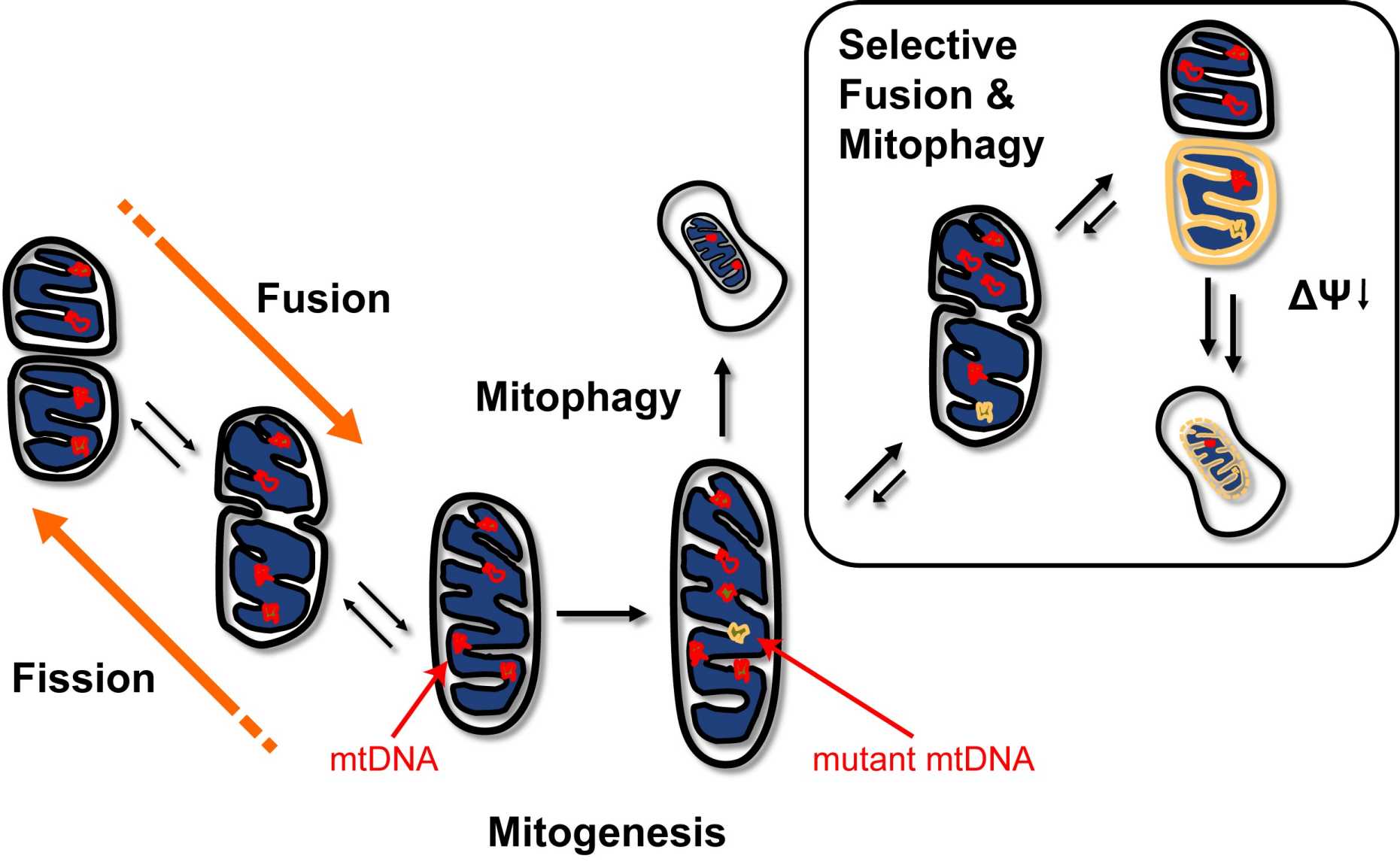Mitochondrial Dynamics and mtDNA Integrity
Current Participant: Jürg Hartmann
An intuitive understanding of the accumulation of mutant mtDNA is impeded by the complexity of mitochondrial dynamics and intracellular mtDNA organization. Mitochondria along with mtDNA are turned over continuously through the process of biogenesis and autophagy (mitophagy). These organelles have also been observed to frequently fuse with each other and undergo binary divisions, a process known as mitochondrial fusion-fission, during which mitochondrial contents such as mtDNA are exchanged. Furthermore, in cells, one or more mtDNA are organized into nucleoids and nucleoids are bound to the inner-membrane of mitochondria. Thus, a complete understanding of mtDNA clonal expansion will need to consider all of these attributes, motivating the use of in silico modeling to gain insights into the maintenance of mtDNA integrity and mitochondrial functionality.
In this project, we developed stochastic models of mitochondrial fusion-fission and mtDNA turnover to understand the role of mitochondrial quality control (QC) in the maintenance of mtDNA integrity (see Figure 1). Model simulation results showed that slow fusion-fission can lead to increased inter-mitochondrial mtDNA heterogeneity in individual cells, which by the actions of mtDNA turnover, can subsequently result in higher variability in mtDNA genotype among cells in tissue. Furthermore, mitochondria with lowered membrane potential have been shown in vivo to be less likely to fuse with other mitochondria and to be selectively removed by autophagy. Together, these two selective processes serve as the core of mitochondrial QC in a cell. By applying global sensitivity analysis, we could identify critical parameters and QC processes that maintain mtDNA integrity. The analysis pointed to an intervention strategy involving an upregulation of mitophagy, a process that degrades mitochondria. We validated this strategy by treating Caenorhabditis elegans with lithium. In agreement with our model-based prediction, an increase of mitophagy in lithium-treated worms led to better mitochondrial function and importantly to longer lifespan and healthspan when compared with control.

References
- Tam, Z., Gruber, J., Halliwell, B. and Gunawan R. Context-Dependent Role of Mitochondrial Fusion-Fission in Clonal Expansion of mtDNA Mutations. PLoS Computational Biology 11(5):e1004183 (2015). external page abstract
- Tam, Z., Gruber, J., Ng, L.F., Halliwell, B. and Gunawan R. Effects of Lithium on Age-related Decline in Mitochondrial Turnover and Function in Caenorhabditis elegans. J Gerontol A, (2014) external page abstract
- Tam, Z., Gruber, J., Halliwell, B. and Gunawan R.* Mathematical modeling of the role of mitochondrial fusion-fission in mtDNA maintenance. PLoS One, 2013. external page abstract
- Poovathingal, S. K., Gruber, J., Halliwell, B. & Gunawan, R. Stochastic drift in mitochondrial DNA point mutations: a novel perspective ex silico. PLoS Computational Biology 5, e1000572 (2009). external page abstract